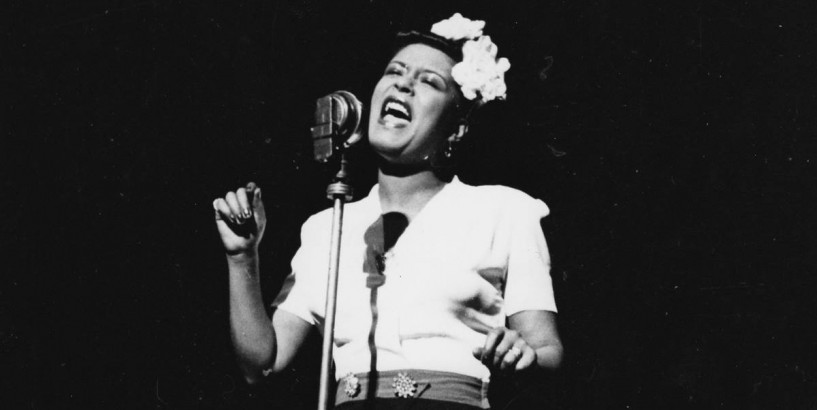New York City will soon be home to three monuments that honor black women and their historical contributions. Announcing the statues Wednesday at the Brooklyn Museum, the Big Apple's first lady Chirlane McCray said they will celebrate the lives of teacher and civil rights activist Elizabeth Jennings Graham and singer Billie Holiday. Last November, she announced a monument for civil rights activist and politician Shirley Chisholm.
The SheBuiltNYC program is honoring five women across New York’s five boroughs. Other honorees include public health advocate Dr. Helen Rodriguez Trias and lighthouse keeper Katherine Walker.
“We pledge to do better by the leaders, achievers and artists who’ve not gotten their due in the histories written by men,” McCray said. “We cannot tell the story of New York City without recognizing the invaluable contributions of the women who helped build and shape it.”
The honorees were decided after an open call for names last year. The monuments’ artists will be announced in 2020, while their construction is expected to begin in 2022.
Here is everything you should know about the black women who will get statues in New York.
Billie Holiday Billie Holiday Gilles Petard / Getty Images Eleanora Fagan — better known as Billie Holiday — was an American jazz singer with a career spanning almost 30 years. She began her career singing in nightclubs in Harlem, where she was discovered by the producer John Hammond at 18 years old. Holiday released 12 studio LPs and is credited with revolutionizing the sound of jazz.
In the 1930s, Holiday was introduced to the poem “Strange Fruit,” which depicted a lynching in the American South. The lyrics were considered so controversial that her record label, Columbia Records, wouldn’t record the song, so Holiday recorded it for Commodore Records. “Strange Fruit” became Holiday’s bestselling record and is “considered by scholars to be the first protest song of the civil rights era,” according to the official Holiday website .
The Billie Holiday monument will stand near Queens Borough Hall.
Elizabeth Jennings Graham Elizabeth Jennings Graham Kansas Historical Society Elizabeth Jennings Graham, an African-American schoolteacher and civil rights activist, played a major role in the desegregation of the New York transit system.
She was on her way to the First Colored American Congregational Church on July 16, 1854, when she tried to board a streetcar of the Third Avenue Railway Company. At the time, the company only allowed white passengers. The train’s conductors forced Jennings Graham out of the car, but that same year, she sued and won a lawsuit against the transit company for ejecting her because she was black.
All New York transit systems were desegregated by 1865.
Jennings Graham’s monument will be placed next to Grand Central Station.
Shirley Chisholm Congresswoman Shirley Chisholm. Bob Peterson / The LIFE Images Collection/Getty Images Born in Brooklyn, New York, on Nov. 30, 1924, Shirley Anita St. Hill Chisholm was the oldest of THE four daughters OF immigrant parents Charles St. Hill, a factory worker from Guyana, and Ruby Seale St. Hill, a seamstress from Barbados. Though her teachers encouraged her to pursue a political career, Chisholm responded that she faced a “double handicap” as a black woman.
Yet, after briefly working as a nursery school teacher, Chisholm transitioned to politics.
In 1968, she became the first black woman elected to the U.S. Congress. Four years later, Chisholm became the first black candidate for a major party's nomination for president of the United States, and the first woman to run for the Democratic Party's presidential nomination.
Her statue will be installed in Prospect Park, near her Congressional district.
In January 2018, New York Mayor Bill De Blasio issued guidance about addressing controversial monuments throughout the city in a report from the Mayoral Advisory Commission on City Art, Monuments and Markers. The report specifically called for the removal of the statues of Christopher Columbus, President Theodore Roosevelt and J. Marion Sims (Sims performed examinations on enslaved black women without anesthesia). The statues are in Columbus Circle, the Museum of Natural History and Central Park, respectively. The Department of Cultural Affairs is set to invest up to $10 million for new public artworks that commemorate underrepresented groups — which includes the monuments honoring Holiday, Jennings Graham and Chisholm.
“Public monuments should tell the full history and inspire us to realize our potential – not question our worth,” McCray said. “In honoring these four trailblazers today, New Yorkers will have the opportunity to see powerful women who made history receive the recognition they deserve.”
Follow NBCBLK on Facebook , Twitter and Instagram
Gwen Aviles Gwen Aviles is a desk assistant at NBCNews.com where she reports, researches and produces content across verticals.









